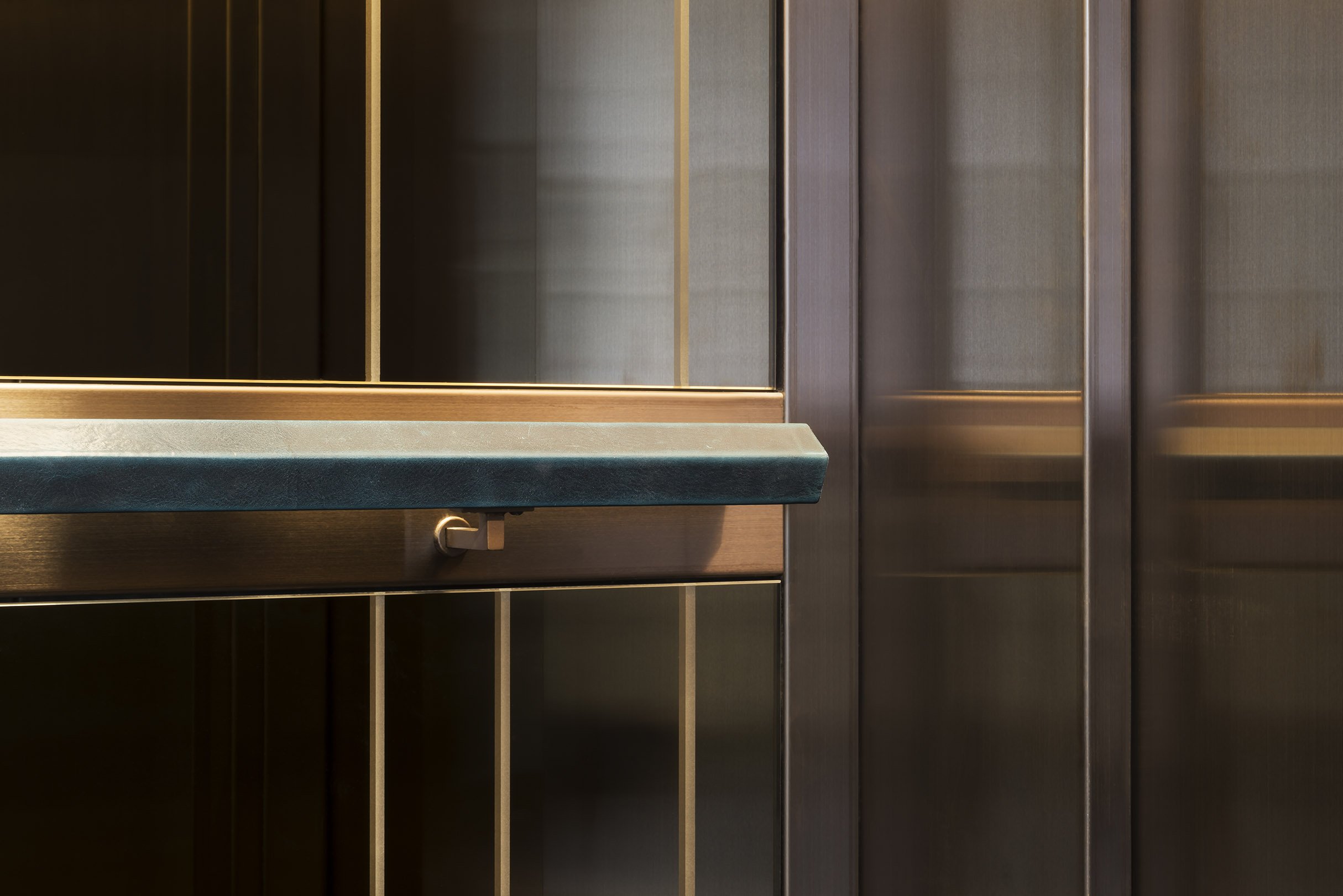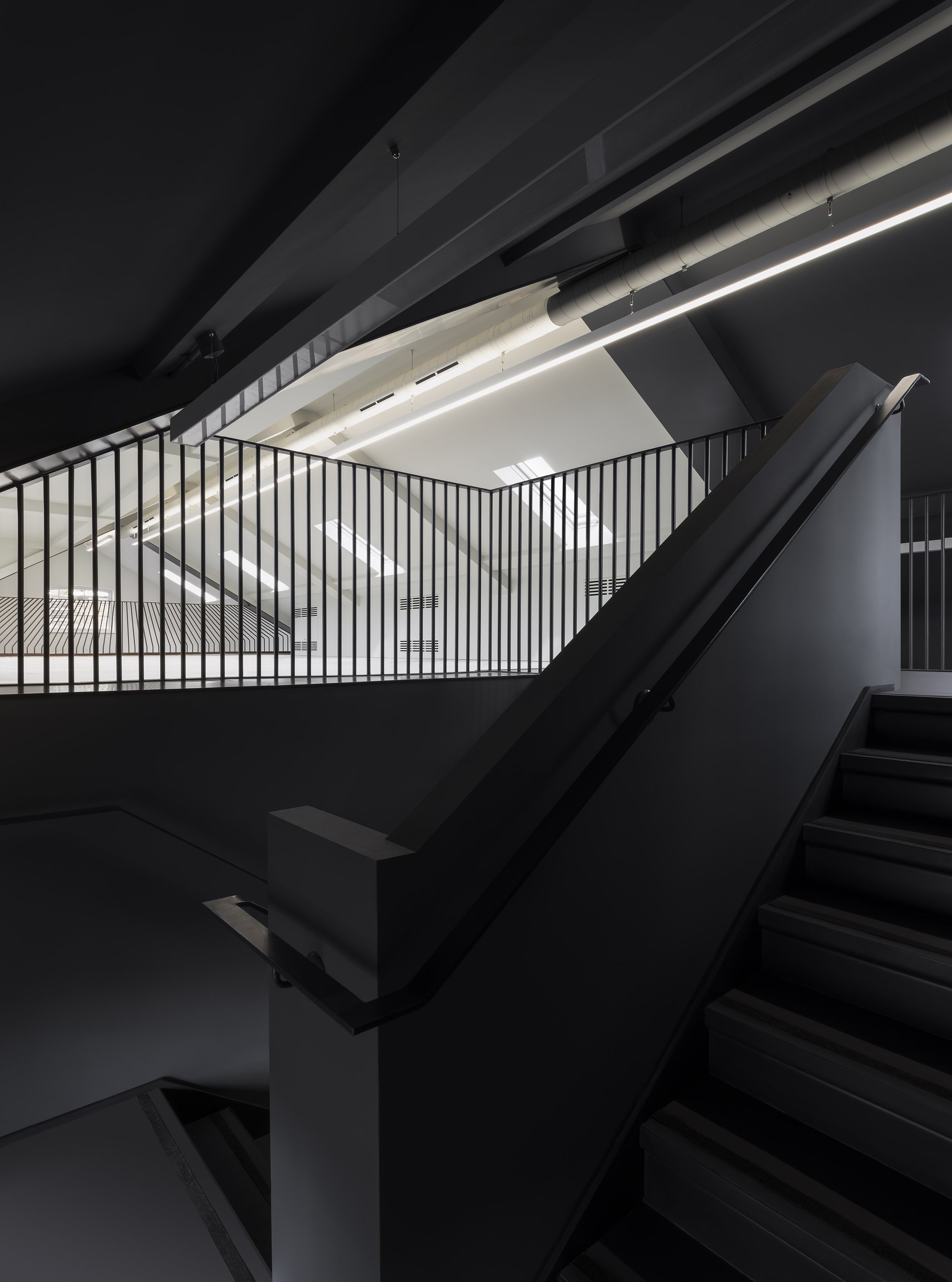
the gaslight
On behalf of I.S.A. (Holdings), dMFK and Bureau De Change architects have completed the transformation of an Art Deco building on Rathbone Street, creating a contemporary and flexible workspace in this vibrant corner of Fitzrovia. The Gaslight embraces innovative modern design, whilst celebrating the distinct design heritage of the building and paying homage to the area, famed for its history of artisanal workshops and craftsmanship.
Within dMFK architects’ refurbished, reconfigured and extended original building, Bureau de Change has created the distinctive interiors; bespoke materials, patterns and geometries add an artisanal character into the fabric of the building, which is quite unexpected in a commercial development.
Drawing on the building’s art deco character and the area’s rich heritage of craftsmanship, a cohesive visual narrative that runs throughout the building has been created.
The centrepiece of the scheme is an innovative sculptural intervention in the new circulation core, that connects the four floors of offices. Two layers of bespoke bronze-coloured mesh, which sit in front of each other generating a moiré effect that obscures the concrete core have been created. Their intricate pattern reflects the Art Deco heritage of the building, using contemporary fabrication techniques. Underneath the suspended stairs, which wrap around the core at ground floor, the top layer of pleated mesh peels away from the one behind that continues to run through the building. This interplay between the layers creates an illusion that the steps are formed from the intricate filigree metal and enhance the sculptural quality of the work.
With this intervention Bureau de Change conveys a sense of hand-craftsmanship, whilst using industrial materials and fabrication. The panels are laser-cut, folded, stainless steel PVD coated with a burnished bronze hue.
To develop the cladding, a series of one-to-one mock-ups were created, in collaboration with the fabricators John Desmond Ltd, testing every corner and detail to make sure the bespoke pattern which consists of 85 burnished bronze panels, each laser cut and folded, is consistently expressed throughout the four-storey height of the core. This process is more akin to an artisan tradition than architectural metalwork.
The cladding’s distinct character continues into the lift interiors, with Art Deco details etched on the mirror and a bespoke pentagonal blue leather handrail made by Bill Amberg Studio, which reflects the owner’s connection to shoemaking and leather. This attention to detail continues throughout the interiors. The bathrooms use a bespoke terrazzo panelling – an unexpected contemporary echo of the traditional timber panelling that might have been found in the original interiors. The wayfinding in the building uses extruded bronze signs in a distinctive ribbon font, whilst the numbers for the building’s entrance are shaped into the metal railings on the restored wooden gates. Even the timber handles on the external entrance doors have been designed in three dimensions and turned on a lathe to provide an unexpected tactile quality to imbue a sense of craftsmanship in the visitor’s experience.
In the office spaces, the exposed services have been organised to complement the ceiling’s existing structural grid. Bespoke joinery covers the fan coil units that sit in the centre of the structural bays, articulated by linear lighting to create light and airy working spaces. These office spaces lead up to a mezzanine floor, inserted by Bureau de Change archietcts into the volume of the new roof. On one side the access stair has been neatly tucked away behind a dark grey volume. Whilst on the other side the mezzanine’s exposed profile is highlighted by a bronze ribbon that encapsulates its contours, in turn echoed by a bronze balustrade, which fans from either side into the middle as a rhythmic additional to the volume.












Photography: Gilbert McCarragher
